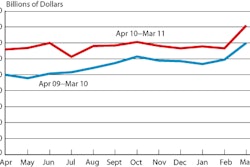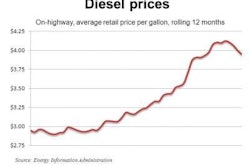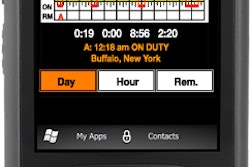During the coming hurricane season, states will have greater access to a Federal Highway Administration modeling tool that can help them prepare for freight traffic shifts resulting from major road closures after natural disasters, the agency announced Wednesday, June 1.
The Freight Analysis Framework modeling tool is designed to show how truck traffic will shift regionally or nationally in response to major road closures. The tool works by removing the closed or damaged highway from the networks and recommending alternate available routes.
FHWA is encouraging states to take advantage of FAF, posted on the FHWA Website at http://ops.fhwa.dot.gov/freight/freight_analysis/fd/index.htm. FHWA says it has refined and updated FAF over the years to make it more widely available.
“We expect this tool to be critical in the coming months in helping states know where freight traffic is likely to increase if a hurricane closes major roads,” says FHWA Administrator Victor Mendez. “It can help states plan for alternatives when major freight routes are closed, helping businesses continue delivering their products following a natural disaster.”
During the recent flooding that affected a major freight route, Interstate 40 in Arkansas, FHWA says it used FAF to project potential freight movement changes that affected six Southeast states and analyzed where longhaul freight trucks might detour during the I-40 closure.
FHWA says that knowing the changes in regional freight travel patterns in times of crisis can allow states to set up detours, prepare alternative routes to handle more traffic and adjust signals and message signs; it can help ensure traffic continues to flow smoothly and safely for people on the highways.
The FAF freight movement dataset includes information on the amount and types of goods that move across land, sea and air between large metropolitan areas, states and regions. It is designed to provide comprehensive information on national level freight flows across the nation’s transportation network.











